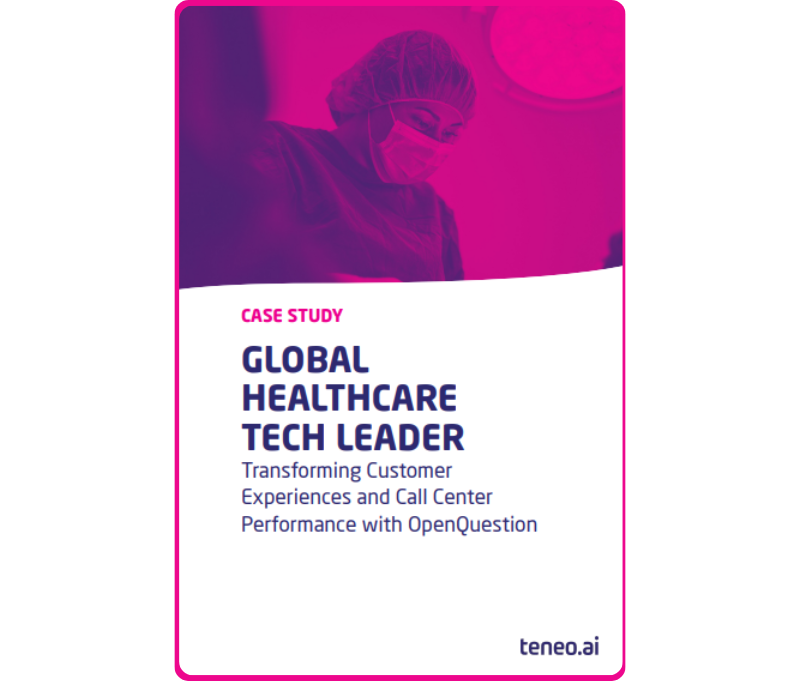Building on our exploration of voicebot software’s impact on customer service and retail, we now turn our attention to the healthcare industry. Voicebot software is revolutionizing healthcare by improving patient engagement and streamlining operations. By leveraging AI and natural language processing (NLP), voicebots are transforming the way healthcare providers interact with patients, offering a more efficient and personalized experience.

The Role of Voicebots in Healthcare
Voice AI can handle a variety of tasks in the healthcare setting, from scheduling appointments to providing medication reminders and answering health-related queries. This technology not only enhances patient engagement but also improves operational efficiency for healthcare providers. In addition, companies needs to be aware of regulations like GDPR, and EU AI Act if they are located in Europe.

Real-World Applications
Voicebot is being utilized in various healthcare settings. A notable example is the implementation of voicebot technology by a global healthcare tech company, as detailed in their case study. Discover how a company by using Teneo managed to Save $6M in Costs and save +36,000 Agent Hours.
Want to read more?
Voicebot software is revolutionizing the healthcare industry by improving patient engagement and operational efficiency. With capabilities ranging from appointment scheduling to personalized health advice, voicebots are enhancing the way healthcare providers interact with patients.
FAQs
How is voicebot software transforming healthcare by improving patient engagement and care delivery?
Voicebot software is transforming healthcare through enhanced patient engagement and care delivery: (1) 24/7 Patient Support: AI-powered voice assistants providing continuous access to health information, medication reminders, and symptom guidance with HIPAA-compliant security, (2) Intelligent Symptom Assessment: Voice-based triage systems helping patients understand symptom severity and directing them to appropriate care levels, reducing unnecessary emergency visits by 30-40%, (3) Medication Management: Automated reminders, dosage instructions, and adherence monitoring improving patient compliance by 60-70%, (4) Appointment Scheduling: Natural language booking and rescheduling with integration to healthcare management systems, (5) Chronic Disease Support: Ongoing monitoring and coaching for diabetes, hypertension, and other conditions with personalized care plans, (6) Mental Health Assistance: Voice-based therapy support, crisis intervention, and emotional wellness monitoring with professional oversight, (7) Multilingual Care: Real-time medical translation enabling care for diverse patient populations in 100+ languages. Healthcare organizations implementing voicebot software report 50-70% improvement in patient satisfaction and 40-60% reduction in administrative costs. Explore Teneo’s healthcare voice AI solutions to see HIPAA-compliant patient engagement capabilities.
What specific patient engagement benefits does voicebot software provide in healthcare settings?
Voicebot software provides comprehensive patient engagement benefits in healthcare:
Accessibility Enhancement: (1) Universal Access: Voice interface supporting patients with visual impairments, mobility limitations, or technology challenges, (2) Language Accessibility: Multilingual support breaking down communication barriers for non-English speaking patients, (3) Age-Friendly Interface: Natural conversation eliminating complex technology navigation for elderly patients.
Engagement Improvement: (1) Proactive Communication: AI-initiated check-ins, health reminders, and wellness coaching maintaining continuous patient connection, (2) Personalized Interactions: Tailored health guidance based on individual medical history, conditions, and treatment plans, (3) Immediate Response: Instant access to health information and support without appointment scheduling or wait times, (4) Emotional Support: Empathetic AI responses providing comfort and reassurance during health concerns.
Care Continuity: (1) Treatment Adherence: Medication reminders and treatment plan guidance improving patient compliance and outcomes, (2) Symptom Monitoring: Regular health check-ins and symptom tracking enabling early intervention and prevention, (3) Care Coordination: Seamless communication between patients and healthcare teams with automated updates and alerts.
Health Outcomes: (1) Preventive Care: Proactive health monitoring and education reducing hospital readmissions by 25-35%, (2) Patient Satisfaction: 60-80% improvement in satisfaction scores through enhanced accessibility and support. Healthcare providers report significant improvements in patient outcomes and engagement metrics.
How do healthcare organizations successfully implement voicebot software while ensuring compliance and patient safety?
Healthcare organizations ensure successful voicebot implementation through comprehensive compliance and safety strategies:
Regulatory Compliance: (1) HIPAA Adherence: End-to-end encryption, secure data storage, and strict access controls protecting patient health information, (2) Medical Device Regulations: Compliance with FDA requirements for AI systems providing clinical decision support or diagnostic assistance, (3) State Licensing: Adherence to state-specific healthcare regulations and professional licensing requirements, (4) International Standards: Compliance with global healthcare data protection regulations for international healthcare organizations.
Patient Safety Measures: (1) Clinical Oversight: Healthcare professional supervision of AI recommendations and patient interactions, (2) Emergency Protocols: Immediate escalation procedures for urgent medical situations with direct connection to emergency services, (3) Accuracy Validation: Comprehensive testing and validation of medical information and recommendations, (4) Liability Management: Clear protocols for AI limitations and appropriate use cases with professional oversight.
Implementation Best Practices: (1) Phased Deployment: Start with low-risk applications like appointment scheduling and basic information, then expand based on proven success, (2) Staff Training: Comprehensive education for healthcare teams on AI capabilities, limitations, and integration workflows, (3) Patient Education: Clear communication about voicebot capabilities and appropriate use cases, (4) Continuous Monitoring: Ongoing performance tracking and optimization ensuring patient safety and satisfaction. Healthcare organizations following these practices achieve 95%+ compliance rates and maintain high patient safety standards. Request healthcare implementation consulting for expert guidance on compliant voicebot deployment.


